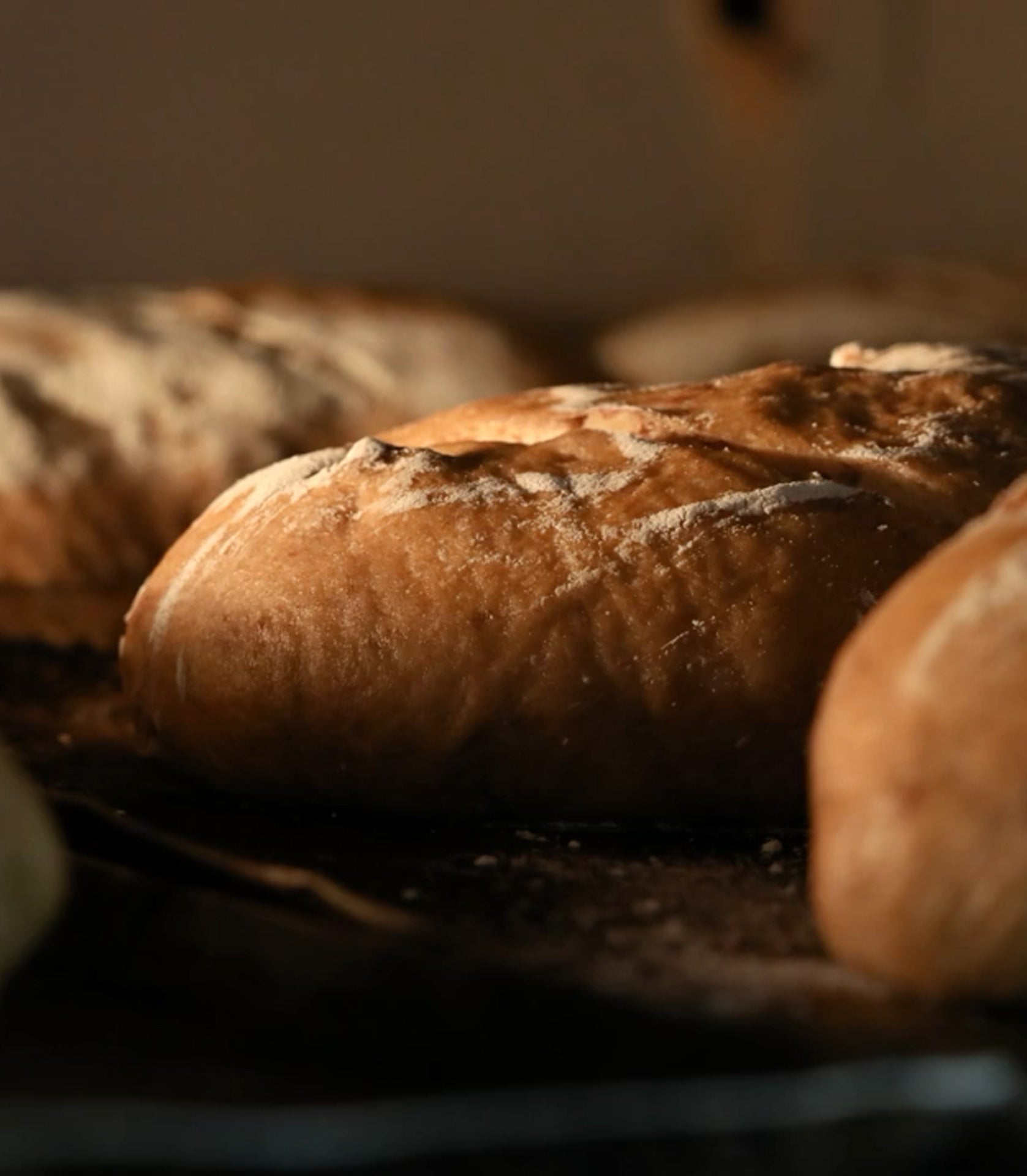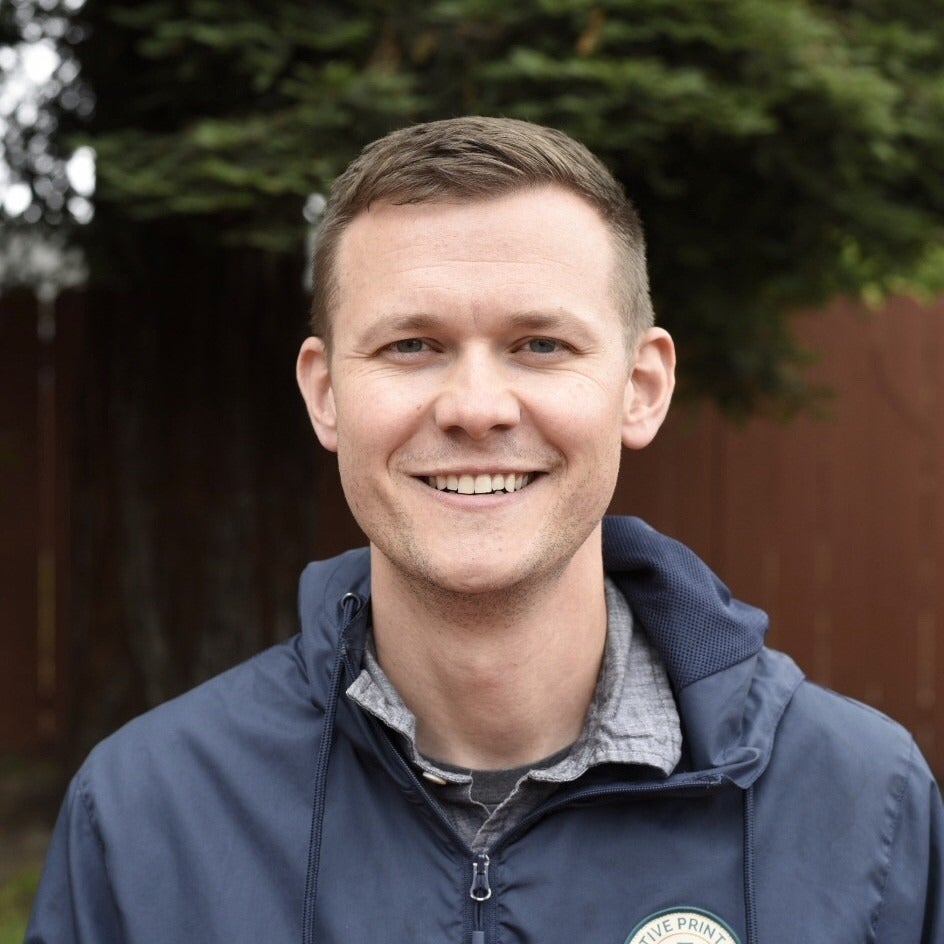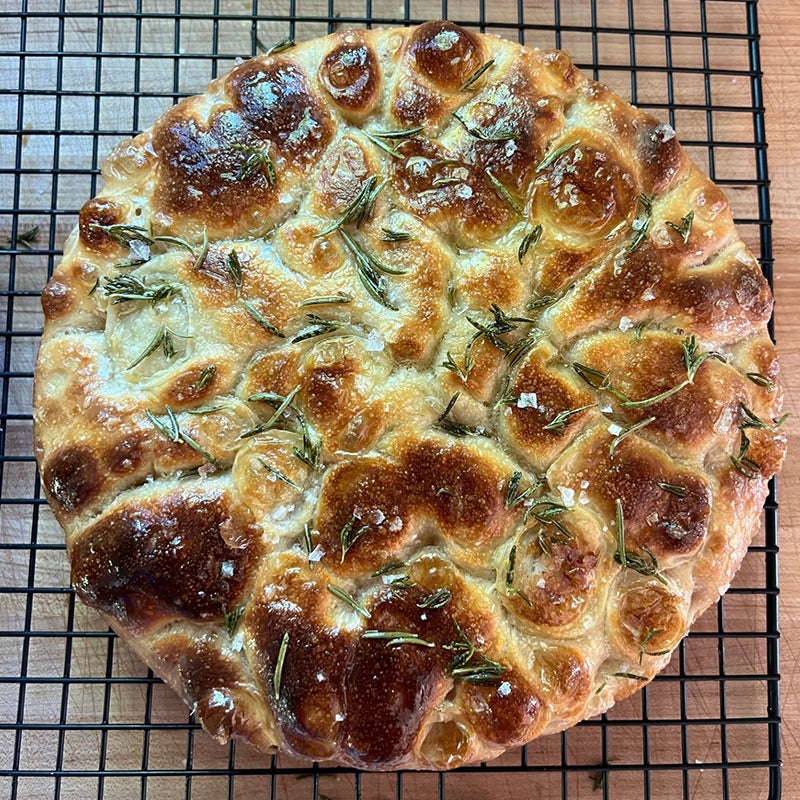University of California, Riverside

Rising to the Challenge
Mike Vaona mixed his engineering degree with a love for pizza and baked until his dreams were golden
Sourdough, not yeast, because its natural fermentation process is good for the gut. Silicone, not parchment paper, because it’s reusable and better for the Earth. LFGB silicone, to be precise, because it’s higher quality and long lasting. These are the micro-but-mighty entrepreneurial decisions made by Mike Vaona, creator of Rosehill Sourdough. More than just a foodie website, Rosehill Sourdough is a digital hangout where professional bakers — and not-so-professional home bakers — can buy baking products, get free recipes, and watch how-to videos.
Prior to becoming a master bread maker, Vaona, who earned a bachelor’s degree in mechanical engineering from UCR in 2010, joined Northrop Grumman after graduating, where he worked as a mechanical design engineer for five years. He then held roles at several startups before embarking on a culinary journey that led him to founding Rosehill Sourdough. He took a break from teaching his followers how to “bake better bread” to share his story about transitioning from engineer to baker to sourdough lifestyle maker.

Rosehill Sourdough got its start in 2017 when Vaona began making sourdough from his home on Rosehill Drive in Riverside. (Courtesy of Mike Vaona)
What led you to earning a degree in engineering at UCR?
I think engineers are born and not taught; being an engineer has more to do with having ingenuity than a degree. For me, I knew at a really young age that I wanted to create and make and build. I have an older brother, and we got into motorcycles when I was 12 and he was in his early 20s. My parents had always impressed upon me the importance of going to college. I wondered, “What can I do in college to allow me to work on motorcycles?” I think that all led to me wanting to go into engineering, not really knowing what that meant.
At a UCR career fair, I met someone from Northrop Grumman and got an internship between my junior and senior years. That led to a full-time engineering job when I graduated. I was really grateful for that experience.
How did engineering lead to baking?
Right after UCR, my college roommate and I moved down to San Diego. He went to a master’s program, and I got the job at Northrop. My girlfriend (now wife), who I had met at UCR, also moved there for school, so now we were these young professionals and grad students who were broke. I got into pizza making as a way to feed us, and I started baking with sourdough to try to improve my pizzas.
In 2016, when my daughter was six months old, my wife and I sold our house in the Bay Area and moved to Seattle for a job I was offered at a startup. Within three weeks, funding for the startup collapsed, and we were all let go. That made me rethink what I wanted to do. I toured a culinary school in Seattle and while I was there, I called a buddy of mine who’s a chef. He told me, “Don’t pay somebody to learn this stuff. Come work for me in my kitchen and I’ll teach you.” That’s when I started making pizza more religiously. At that point, I got a job offer to join a different startup in Riverside, so I moved back. I got really plugged into the community doing pizza pop-ups and catering events, sharing recipes with friends and family via a Google doc, and starting an Instagram about baking with sourdough in 2017.
In 2019, I interviewed for the role of head of engineering for Ooni pizza ovens in Scotland. It was kind of an insane experience to walk into that interview and say, “I might be the most qualified person in the world for this role.” It was a bold thing to say, but I truly believed it. I had a solid engineering base and had cooked over 1,000 pizzas in their ovens. I worked at Ooni from 2019 to 2022, and all that time, I was working on this little side project I had called Rosehill Sourdough.
What’s the Rosehill Sourdough origin story?
In December 2019, my wife surprised me with a Christmas present. She had taken the baking notes from my Google doc and turned them into an e-book, which she encouraged me to sell. Even though I was reluctant at the time, I built a website, put the e-book up for sale, and people started buying it. And then, 2020 happened, and everyone was stuck at home wanting to learn how to bake sourdough. Google search results for sourdough peaked, and a lot of that traffic was coming to me. I sold a lot of e-books, got a lot of followers on Instagram, and got a lot of views on my YouTube channel. It was just this crazy thing that happened.
In mid-2022, my work visa in Scotland was expiring with the option to re-up with Ooni for another three years, but I decided it was a good time to move back. Back in the States, my wife and I were watching MasterClass one night, and Sara Blakely from Spanx was talking about entrepreneurship. My wife asked me, “If you were to start a product company tomorrow, what would your product be?” I said I would make a reusable silicone baking sheet to stop wasting parchment paper. The next day, we started prototyping, and that’s eventually what became the BreadMat. In December 2022, we moved to Oregon, and I built my studio in our basement. I started making content for the BreadMat, found a manufacturer, and started selling them on the website. People really liked them, and we started rolling out more products, like a proofing basket and a spatula set, and we have a lot more on the way.
How do your skills as an engineer complement your baking career?
I’m able to understand how someone might use a product and what features they might need. And then I think about the things the customers are never going to see or know, but they’re going to experience the ramifications of. Material selection is a really big one. For instance, my spatula set is made of a special type of silicone called LFGB platinum silicone. You look at it, and it and it looks like a normal silicone spatula, but it’s higher quality and more durable. However, since LFGB silicone is a lot more expensive, a lot of manufacturers don’t use it.
Right now, we’re going through a tooling update on the BreadMat, and I’m able to engage in a conversation with the supplier with tooling terms that they understand. When they say, “Oh, I don’t know if we can do that,” I know I can respond with, “I think you can — I think your injection speeds are a little too slow, or your temperatures are off.” Engineers are really good at being upset when they ask why someone does it this way and the response is “because it’s the way we’ve always done it.” That’s the quickest way to upset an engineer.
What’s one thing you want people to know about sourdough?
It’s much less difficult than people make it seem, and you don’t have to make very sour bread. You can make things very mild. Sourdough is a natural fermentation process that you’re just trying to control. You don’t have to do too much!
What are some of your favorite sourdough pizza toppings?
I love to top any pizza with cilantro and lime, and I also prefer to do garlic olive oil as a base instead of tomato sauce. Even just those three things on a pizza with a little mozzarella is pretty fantastic!
What’s been the biggest challenge to running your own business? Any advice for aspiring entrepreneurs?
The biggest thing I struggle with is when you get feedback from someone who doesn’t quite get what you’re trying to do. It’s not every day I get negative feedback, but occasionally somebody sends me a mean message on Instagram, and I’ve had about five negative reviews of the BreadMat. I take all of those so personally because I want everyone to love this product. So, one piece of advice is that you don’t have to take those things personally.
A lot of it is trusting your gut. Customers experienced fraying with some of the early BreadMats, even though none of the beta testers had it happen to them. Instinctually, I kind of wanted to let it play out, but I really had to challenge that and realize we had to address it with the manufacturer right away. It just comes down to personal relationships with people. Are you being nice to your suppliers? Are you being nice in your email correspondence? All these relationships are personal relationships, and someone’s going to want to do something for you if you’ve been nice to them.
Learn more about Rosehill Sourdough at rosehillsourdough.com and on Instagram and other social media platforms @rosehillsourdough.
Highlander Cookbook
Sourdough Focaccia

Ingredients:
- 59 grams peaked sourdough starter (see step 1)
- 297 grams water
- 11 grams salt
- 11 grams olive oil
- 371 grams bread flour
Directions:
- FEED: (4-10 hours before PREP) Mix 16 grams of sourdough culture with 32 grams of water, 16 grams of bread flour, and 16 grams of whole wheat flour (1:2:2). This will be enough starter for the recipe +20 grams.
- PREP: (14 hours before BAKE) Combine water, salt, and oil in a medium bowl. Stir to dissolve the salt. Add starter and mix until water is milky in color. Add flour. Mix just until combined, until you cannot see any dry flour. It will be shapeless. Let rest, covered with a damp towel or lid on the counter, 1 hour.
- After 1 hour, fold using a stretch and fold technique, stopping when the dough is smooth. Ensure the seam side is down and smooth side is up. Let rest, covered on the counter, 1 hour.
- Coil fold the dough by using wet hands to get under the dough on both sides and gently pull up, allowing one side of the dough to unstick from the bowl and fold onto itself. Rotate a half turn and repeat. Turn the bowl a quarter turn and repeat. Rotate a half turn and repeat, for four total folds. Let rest, covered on the counter, 1 hour.
- With wet hands, fold the dough again using the coil fold method. Let rest, covered on the counter, 1 hour.
- Lightly and thoroughly coat the pan with butter, then olive oil. Set aside. With wet hands, fold the dough again using the coil fold method. Remove the dough from the bowl and place into the oiled pan, smooth side down. Let rest in the pan, covered with a damp towel, on the counter for 10-16 hours.
- BAKE: Preheat oven to 450˚F. After the oven is preheated, uncover the dough. Drizzle with olive oil, then firmly dimple the dough using lightly wet or oiled hands. Bake covered for 15 minutes, rotate, then bake uncovered for 10-15 minutes, until dark golden. Remove from pan and allow to cool on a rack for 1 hour.
Visit Rosehill Sourdough for detailed recipe notes and a how-to video.